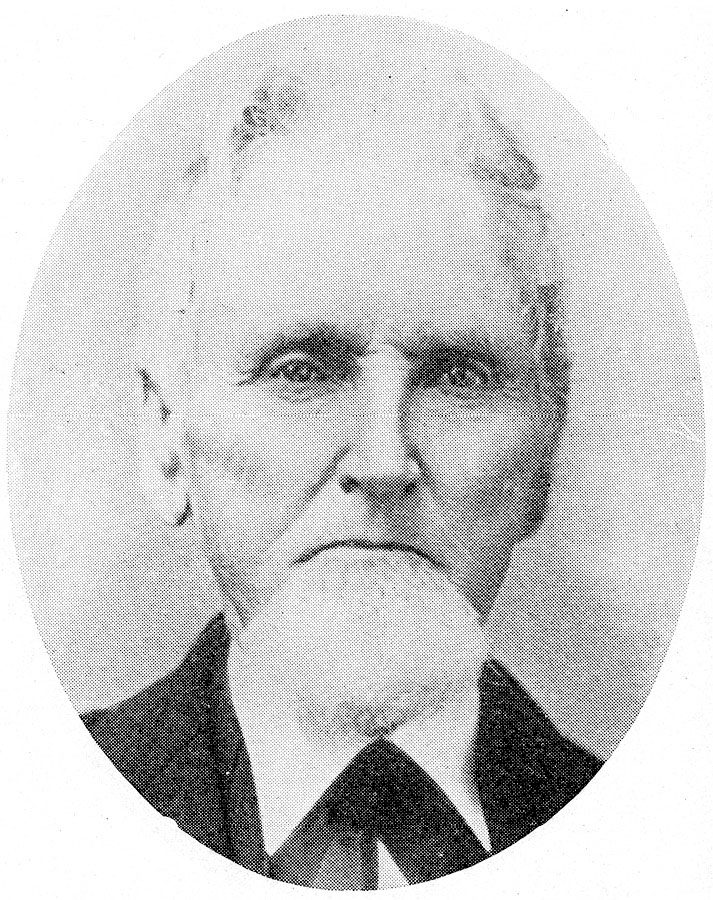David Fullmer
(1803-1879)


By Susan Easton Black
On September 16, 1836, David was baptized by Henry G. Sherwood. His commitment to the covenant made at baptism dramatically changed his life’s focus. He went from being a businessman to a devoted and faithful servant of the Lord.
After being ordained an elder on February 23, 1837, in Kirtland by Reuben Hedlock, David joined Latter-day Saints residing in Missouri. By spring of 1838, he and his family had settled at Adam-ondi-Ahman and David had taken up farming. At the time when he “had a severe sickness and was reduced nigh unto death,” mobs forced him from his home.1 His wife recalled, “The mob came and ordered us to leave our homes and go away in 24 hours or they would come and burn our homes and destroy our property.”2 David and his family abandoned their home and farm and journeyed through the wilderness of Missouri before crossing the Mississippi River to safety in Illinois.
In 1839 they settled with other Latter-day Saints in Commerce (later known as Nauvoo), Illinois. In the city of the Saints, David was ordained a high priest. He served on the Nauvoo High Council and the Council of Fifty before accepting a mission call to share the gospel of Jesus Christ with those residing in Michigan (see D&C 124:132). Upon his return to Nauvoo, David was elected a city councilman.
Unfortunately, he and his family faced religious persecution in Illinois. He said, “We were not permitted to enjoy our home long, for the mobs burned and otherwise destroyed property and finally drove us from the state of Illinois.”3 By spring of 1846, the family had reached the Latter-day Saint encampment of Garden Grove in the Territory of Iowa. David was appointed the presiding officer there. His assignment proved difficult, as “there were many poor among us who were almost destitute both of food and clothing.”4
Rumors of misconduct in the encampment led the high council in Winter Quarters to disfellowship the entire Garden Grove branch. On July 19, 1847, Orson Hyde explained, “The High Council here did yesterday withdraw the hand of fellowship from the branch of the Church at Garden Grove, until a proper investigation can be had as to the real causes of the division and contentions that appear to exist in that branch.”5 David journeyed from Garden Grove to Winter Quarters to answer charges against his branch before the high council. As a result of David’s words, the council on August 8, 1847, concluded, “Misrepresentations had been made … without foundation in truth.”6 Fellowship was restored to members of the Garden Grove Branch.
In 1848 David and his family joined the Willard Richards Company and trekked across the plains to the Rockies to reach the Salt Lake Valley. In the valley, David was called to be a counselor to Parley P. Pratt on the Southern Utah Expedition. He wrote, “I was with this company for five months during the winter season, until we could dig our way out of the snow.”7
David played a prominent role in the government of Deseret. He helped write the constitution for the provisional State of Deseret. He represented Salt Lake County in the legislature in Deseret and was the treasurer of the University of Deseret. Due to his prominence, he was often called upon to speak at public gatherings. At one such gathering on Temple Square, David said, “I would not give my experience in the gospel for all the gold and riches of the world, for it is worth much more to me.”8
David served as president of the Salt Lake Stake from 1852 to 1856 while President Daniel Spencer was on a mission in England. When Spencer returned from his mission, he resumed his duties as president. David served as his counselor until health issues forced his release. In 1870 he was ordained a patriarch. In his Last Will and Testament, David requested “that my body be decently entombed but without ostentation.” He also wrote, “I do not forget my Love for President Brigham Young and the Saints.”9
David died on October 21, 1879, in Salt Lake City at age seventy-six.
1. David Fullmer Autobiography, 1. L. Tom Perry Special Collections, Harold B. Lee Library, Brigham Young University, Provo, UT.
2. Elvira Fuller Hickenlooper, “Experiences in the Life of Rhoda Ann Fullmer,” 2. L. Tom Perry Special Collections.
3. David Fullmer Autobiography, 2.
4. David Fullmer Autobiography, 3.
5. Journal History of the Church, July 19, 1847.
6. Journal History of the Church, August 7, 1847.
7. David Fullmer Autobiography, 4.
8. Deseret News, May 2, 1857.
9. Last Will and Testament of David Fullmer. L. Tom Perry Special Collections.
Additional Resources
- Biography of David Fullmer (josephsmithpapers.org)
